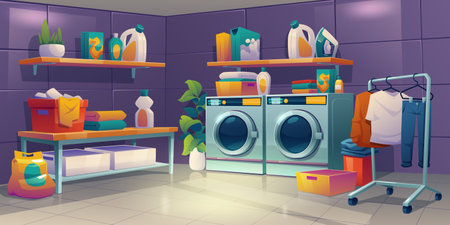Understanding Your Pantry Space
Every British home tells its own story, from charming Victorian terraces to contemporary new builds, and your pantry should echo both your lifestyle and the architectural quirks of your household. Begin by assessing the unique layout of your kitchen or utility area—whether it’s a traditional larder cupboard, a modern pull-out unit, or even a repurposed nook under the stairs. Take stock of your available shelves, alcoves, and corners, considering how each can be optimised for maximum efficiency. Next, define specific storage zones that reflect your culinary habits: perhaps a section for home baking essentials, a shelf dedicated to teas and preserves, or baskets for snacks and cereals beloved by little ones. Tailoring these zones to the size of your household ensures that everything has its place, making daily meal prep smoother and reducing food waste. By thoughtfully evaluating and mapping out your pantry space, you lay the foundation for an organised system that feels both intuitive and uniquely British.
2. Declutter and Categorise
Every well-organised British pantry begins with a thorough declutter. Start by removing every item from your shelves and meticulously checking expiry dates. It’s surprisingly easy for out-of-date tinned tomatoes or forgotten spice jars to accumulate, so be ruthless—if in doubt, throw it out. Once cleared, give your shelves a good wipe down with a mild cleaner and allow them to dry before restocking.
Categorise Your Essentials
Now that your pantry is fresh, it’s time to group items logically for ease of access and optimal visibility. In the modern British household, certain essentials are always in demand—think teas, baking supplies, spices, cereals, and an array of tinned goods. By categorising these staples, you’ll save time when preparing everything from a spontaneous Victoria sponge to a comforting cuppa on a rainy afternoon.
Suggested Pantry Categories
| Category | Examples |
|---|---|
| Teas & Hot Drinks | Breakfast tea, Earl Grey, herbal infusions, hot chocolate |
| Baking Supplies | Plain flour, self-raising flour, sugar, baking powder, cocoa powder |
| Spices & Seasonings | Basil, cumin, mixed herbs, salt, pepper |
| Tinned Goods | Baked beans, chopped tomatoes, chickpeas, soup tins |
| Cereals & Grains | Porridge oats, rice, pasta, couscous |
| Snacks & Treats | Biscuit tins, crisps, nuts, chocolate bars |
Top Tip:
Arrange the most frequently used categories at eye level for quick access. Store less-used items on higher or lower shelves. This simple system will streamline your daily routines and ensure nothing gets lost at the back of the cupboard.

3. Investing in Practical Storage Solutions
To truly elevate your pantry organisation and bring a touch of contemporary British charm into your kitchen, it’s essential to invest in storage solutions that marry practicality with style. Begin by selecting containers, baskets, and organisers tailored to everyday British pantry staples—think tea bags, porridge oats, tinned tomatoes, and classic biscuits. Opt for clear, airtight containers that not only keep food fresher for longer but also make it easy to see what’s inside at a glance. Stackable designs are ideal for making the most of those typically compact UK cupboards and larders, allowing you to maximise every inch of available space. Don’t underestimate the power of clear labelling: using uniform labels helps everyone in the household find what they need quickly, reducing waste and simplifying weekly shops. Wire baskets or wooden crates lend a rustic yet refined aesthetic and are perfect for grouping similar items such as baking ingredients or breakfast goods. By thoughtfully choosing practical and aesthetically pleasing storage solutions, you create an organised pantry that feels both functional and effortlessly inviting—a true hallmark of the modern British home.
4. Making the Most of Vertical and Awkward Spaces
In many British homes, especially charming period terraces and Victorian semis, pantries can be tight on space and full of tricky nooks. To truly maximise your pantrys potential, it’s essential to think vertically and make clever use of every awkward corner. Shelves that reach up to the ceiling, tiered risers, and even door-mounted racks are invaluable for storing everything from tins to teas.
Utilising Every Inch: Essential Solutions
| Space-Saving Solution | Best For | British Home Style |
|---|---|---|
| Adjustable Shelving Units | Cereal boxes, jars, cookbooks | Modern flats & Victorian terraces |
| Tiered Risers | Tinned goods, sauces, spices | Compact galley kitchens |
| Door-Mounted Racks | Herbs, snacks, cleaning supplies | Cottage larders & small pantries |
| Stackable Baskets or Crates | Produce, bread, reusable bags | Edwardian homes with deep cupboards |
| Corner Shelves or Lazy Susans | Bottles, oils, condiments | Pantries with awkward corners |
The Art of Going Vertical in British Pantries
Don’t let precious vertical space go to waste—use slimline shelves above eye level for rarely-used baking gear or extra-long-life staples. In period properties where walls might be uneven, free-standing shelving can adapt to quirky layouts. For those who love a bit of DIY, custom-fit shelves tailored to alcoves or chimney breasts can transform dead space into practical storage.
Tips for Safe and Stylish Storage Up High:
- Keep lighter items on top shelves for safety and easy access.
- Add labels facing outward for quick identification—a must when you’re reaching up!
- Use attractive baskets or coordinated storage containers to keep the look streamlined and clutter-free.
- If you have little ones at home, store breakables and cleaning products out of their reach but within yours.
Embracing Your Home’s Character While Staying Organised
The quirks of older British homes don’t have to limit your storage options. With a bit of creative thinking and the right organisational tools, you can turn every nook into a stylish and highly functional part of your pantry—whether you’re in a snug London terrace or a country cottage larder. Making the most of vertical and awkward spaces is not just practical; it’s an opportunity to celebrate your home’s unique character while keeping your essentials beautifully organised.
5. Establishing a Rotation System
One of the most effective ways to keep your pantry in top condition is by implementing a reliable rotation system. Adopting the classic ‘first in, first out’ (FIFO) approach is particularly vital for British households, where both ambient and refrigerated storage often contend with a variety of perishable goods, from tins of baked beans to packets of crumpets and artisanal preserves. This method ensures that older items are used before newer ones, dramatically reducing food waste and keeping your larder perpetually fresh.
Why FIFO Works Wonders
The FIFO system is simple yet transformative. Every time you bring home groceries from Sainsbury’s or your local farmers’ market, place the newest purchases at the back of the shelf and bring older products forward. This way, you’re prompted to use up what you already have before opening something new, saving money and preventing those all-too-common forgotten jars at the back of the cupboard from expiring unnoticed.
Practical Steps for British Pantries
Start by clearly labelling shelves or baskets by category—think teas, tinned veg, biscuits, and cereals—so it’s easy to spot what needs using up. Make it a habit to check dates as you restock, and take a moment each week to glance through your supplies, pulling anything nearing its expiry date into prime position for imminent use. For busy family homes, consider a chalkboard or magnetic note on the pantry door to highlight items that should be eaten soon.
Preserving Freshness and Reducing Waste
This rotation mindset isn’t just about efficiency—it’s also about embracing a more sustainable lifestyle that respects both your budget and the environment. By ensuring nothing lingers too long on the shelf, your pantry will always feel inviting, well-ordered, and ready for spontaneous baking sessions or hearty Sunday roasts.
6. Blending Function with Aesthetics
When curating the modern British pantry, it’s essential to strike a harmonious balance between practicality and style. The secret lies in weaving in accents that not only serve a functional purpose but also evoke that quintessentially cosy British atmosphere. Consider decanting your dry goods into clear glass jars—these vessels make it easy to spot what you need at a glance, while simultaneously lending a clean, orderly look to your shelves. Woven baskets are another staple; perfect for corralling everything from crisps to tea bags, they introduce an element of natural texture that feels both rustic and refined.
Classic labelling is the finishing touch that brings both order and charm. Opt for handwritten tags or understated fonts on simple labels to keep things visually tidy and unmistakably British in flavour. Don’t be afraid to mix traditional elements with subtle contemporary touches: perhaps a polished brass scoop nestled in a jar of oats, or linen-lined baskets sitting neatly under Shaker-style shelving. These details work together to create a space that is efficient yet inviting—a true reflection of British sensibility, where beauty and utility go hand in hand.
7. Sustainable Pantry Practices
Adopting sustainable pantry practices is becoming increasingly important in the modern British household, where environmental consciousness shapes daily living. To embrace a greener lifestyle, consider incorporating eco-friendly habits such as switching to reusable containers made from glass or sturdy BPA-free plastic for your dry goods, pulses, and baking essentials. This simple change not only reduces single-use packaging waste but also keeps your pantry looking chic and organised.
Bulk buying is another smart strategy for minimising packaging waste. Many local British shops, farmers’ markets, and zero-waste stores now offer refills for everyday staples like oats, rice, pasta, and spices. By purchasing just what you need and avoiding excess packaging, you echo the UK’s growing values of sustainability while supporting local businesses.
Don’t forget to repurpose jars and tins – an old marmalade jar or biscuit tin can become a charming container for nuts or loose-leaf tea, adding both character and practicality to your shelves. Composting food scraps and regularly auditing your pantry also help cut down on unnecessary waste and ensure nothing goes unused.
Ultimately, integrating these eco-friendly habits into your pantry organisation routine is about making small yet meaningful changes that reflect the British commitment to sustainability. By doing so, you create a space that’s not only functional and beautiful but also kinder to the environment—an aspiration perfectly suited to the modern British home.


